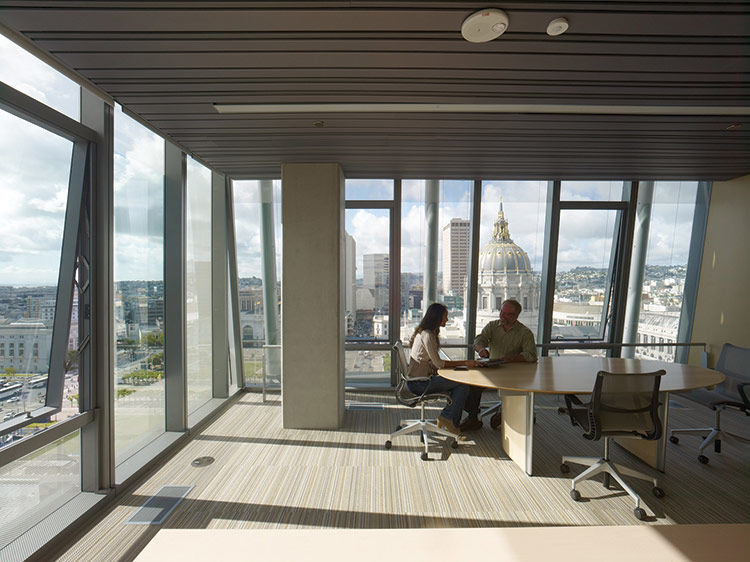Ventilation and Air Distribution
Design with Operable Windows
What Is It?

The Architect's Newspaper, LLC
The installation of operable windows can give building occupants greater control over building temperature. During cooler summer days where outdoor air temperature is comfortable, building windows can be opened to allow for natural ventilation. In buildings with mechanical ventilation systems, the need for cooling and its associated energy costs will be reduced. Operable windows are essential in buildings that utilize passive ventilation strategies for cooling (i.e. cross ventilation and stack ventilation). Operable windows can also provide backup ventilation in the event of power outages or during other times when ventilation systems are inactive. A wide variety of operable windows are available depending on building needs and location.
Operable windows will have a larger capital cost compared to fixed windows, though the additional cost can be offset by reduced energy use for cooling and increased worker comfort and productivity. Not all windows in a commercial building need be operable; 15-20% operable windows positioned to allow for cross ventilation can be a cost-effective investment for a building owner. Ultimately, the cost-effectiveness of operable windows will often depend on occupant behavior. With operable windows it is very important that occupants be properly educated on window operation, so that the building does not end up wasting energy (eg. by having windows open in winter or improperly closing them). However, if managed properly, natural ventilation can save a building up to 10-30% of energy consumption (WBDG).
Benefits
- Operable windows allow for greater control over building temperature and air movement. This can result in increased building occupant satisfaction and productivity; natural ventilation strategies can increase office productivity by up to 11% (US Green Building Council) and residential occupant satisfaction.
- Building energy use can be reduced if less mechanical cooling is required when windows are opened.
- Operable windows can be washed from the inside, potentially reducing cleaning/maintenance costs.
- Operable windows will provide continued ventilation during power outages or other HVAC downtime.
Drawbacks
- Operable windows are more expensive than fixed windows.
- If windows are left open or improperly closed, a building’s ventilation system can experience excessive heating or cooling loads, increasing energy costs.
- Benefits of operable windows require buildings to utilize multiple HVAC zones so that the system can be switched off when windows are opened. These ventilation systems are more expensive and place space configuration limitations on realizing the benefits of operable windows. Failing to shut off HVAC systems when windows are opened can increase energy use for that area by as much as 30%.
- Operable windows may be impractical on the upper floors of high rise buildings. Wind levels may be too high due to the stack effect or higher outdoor wind speeds.
- Natural ventilation will not address humidity issues the way many artificial ventilation systems do.
Regulatory Impacts and Requirements
Potential regulatory touchpoints in Boston and Massachusetts include:
- Building code/Permit
News
- “The case for office buildings with windows that open,” GreenBiz, May 18, 2017
- “A First for Bellevue: Office Towers with Windows that Open,” Puget Sound Business Journal, October 2013
Resources
- US Green Building Council: Natural Ventilation
- WBDG: Natural Ventilation
- FacilitiesNet: Operable Windows Can Save Energy
- NYC Dept. of Design and Construction: Operable Windows


